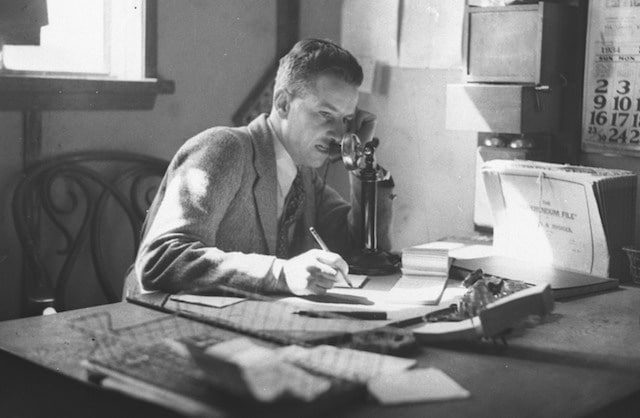Content Marketing for Events
Thinking about using content marketing to promote an event, but not sure where to start? Never fear, we’ve got you covered. In this guide, we explore the best ways to market an event using creative content to achieve your goals.
Event content marketing
What is Event Content Marketing?
Content refers to the various ways you can communicate information online. It can take formats such as:
- website-based articles
- blog posts
- videos
- social media posts
- images
- memes
- GIFs
It can be used strategically to help support several aspects of your event – from initial promotion to on-the-day engagement. You might have heard the phrase content is king – it may be a cliché but it’s one that we believe in.
Event content marketing is what comes next. It’s the process of taking the content you’ve created and getting it seen by the right people at the right time. There are numerous channels that you can use tactically to achieve this, but more on that later.
Why you should use content to market your event
When done right, content marketing can be a highly effective form of communication. It’s a fantastic way to achieve genuine engagement with the audiences that you are trying to reach. It also differs from traditional advertising because it is designed to be useful and relevant.
Here are some of the reasons you should consider content to promote your event online:
- Content can be visually compelling, helping your event stand out from the crowd
- Content can add useful context and provide helpful information about your event
- Content can be shareable – it can be effective at spreading awareness of your event
- Content brings added value to your primary message
- Content can be recyclable – you can update it when your next event happens
Creating compelling and imaginative content will only enhance the image of your event or organisation. Great content can entice new users and also service your existing attendees with useful information.
The good news is that you might already possess the various elements you need to create your event content. Promotional images, video assets (read our guide to video marketing for events) and informative well-written copy can all be utilised when you are thinking about the promotional content you want to create.
Content should fundamentally provide something of value to your audience. Delivering value to the potential event attendee should always be central to your objective.
Getting Started with Content for Events
A great place to start with content marketing for events is to use it to inform potential attendees about the relevant details of your event. You’ll want them to know the essentials – what, when, where – but also, who’s going to be speaking and exhibiting, ticket prices, itineraries and, most importantly, why they should come. You could even use your content to help them get the most out of the day.
Broadcasting this information and your core messages out to potential attendees can seem like an overwhelming task. Remember though that the internet offers lots of tools and platforms to help you get your content out there. More on this later.
What types of content can you create to promote your event?
There are many different forms that your content can take. Here are the main types of content you should consider when marketing an event:
- Posts on your website or blog. They can include: short form news items, long form relevant articles rich in detail and with useful takeaways, interviews with speakers, listicles or quizzes.
- Promotional videos or vlogs.
- Visual or text-led updates / posts to your social media channels. Creating a Facebook event where you post regular updates is an important part of marketing an event online. You can read our guide to Facebook event marketing for more tips.
- Remarketing adverts for ad platforms on Google, Bing, Facebook and Twitter.
When thinking about the best format for your content, it’s important to know your options. It is not always helpful to create content for every channel available to you – just because it’s there doesn’t mean it’s right to use.
Creating lots of content for all available platforms can sometimes be counterintuitive to your objectives as well as being a time vampire. A clear understanding of your aims and goals is fundamental to creating effective content. This is a great time to pause for thought.
Top Tip: Stop and think. Make a cup of tea and draw up a strategy document. List your aims and goals. How can content help achieve them? Do you have assets ready to use or will you have to create them from scratch? What is your main message? Think about each format…does it naturally fit your message? Also think about what forms of content would most appeal to your target audience. We’ll come back to this document later.

Image from State Library of New South Wales via Flickr
Online Content Marketing Strategy
Aims and Goals
Once you have decided on the format, it’s now time to start creating your content. In your strategy document, you should have listed your aims and goals. Start with detailing what you want your content to achieve. Are you creating initial awareness for an event? Trying to convert those that are undecided about attending? Engage a specific target audience? It could be that you are trying to sell last minute tickets or raise the profile of a particular speaker.
Are you building on content that is already online, providing further details? Are you fleshing out context to an event that has happened in the past and will be happening again soon? Are you generating added value content for attendees?
Audience
It’s vitally important to consider your target audience when creating content. Who are they? Where are they (perhaps where your events are happening)? Do they work in certain industries? Are you writing for a specific demographic? If your audience represents a niche group of people, what platform do they most commonly use? What devices will they use to view your content? (developing a mobile content marketing strategy is just as important as thinking about content for desktop).
Tone of voice will help your audience relate to your content. Use language that the majority of your audience will understand. When creating copy make sure that it is easy to read on mobile devices. Keep your sentences and paragraphs short and punchy. Younger audiences tend to engage with visually-led articles or posts so make sure your image assets are attractive and relevant.
Highlighting USPs
USPs (Unique Selling Points) are effective when attracting new audiences. Listing your USPs before you embark on creating content can often uncover great angles for you to write about. Are you the only organisation in the UK to run events on a specific topic? Do you have a highly-regarded speaker attending? What will an attendee learn from your event that will be unique? Think about what will happen at your event and then package that into a potent reason to attend. Understanding your USPs will help you with ideas for what your content could be.
Here are some content ideas you might want to consider:
- Interview a key speaker. This could be a written blog post, video or even a podcast. You can edit down both written or video formats to create shorter teaser pieces to point towards your original long form piece. You can also use their quotes in other promotional content you create.
- Write an article that expands on a topic that will be covered at your event, giving added depth and context to the wider conversation. This will demonstrate that your event will be relevant and informative.
- Use a selection of images to create a series of Instagram posts. Using apps like Canva to overlay text, write a different statistic on each post. This will demonstrate depth of knowledge on the topics covered in the event. You can then use the same assets to create social media remarketing assets.
Other great pieces of content are:
- Takeaways from previous events – slide-shares; round-up pieces; summaries of key themes etc.
- Industry insights from speakers
- Round-up of useful resources
- How to get the most out of the event tips, focusing on planning
- Downloadable resources for data capture – build GDPR compliant mailing lists for future events
Pain Points
Being able to foresee problems or ‘pain points’ within the processes of creating content can help you effectively plan ahead. Are you working within a limited time frame? Is the area you are creating content for technical? Will you need to spend a lot of time acquiring the knowledge you will need to use apps or editing software?
Do you have access to all the assets you’ll need to execute your content? Factoring in any circumstances that will affect your ability to create the content you are planning will help you to create solutions to problems you are yet to encounter. It will also help to inform your choices on which content format to use.
Call to action
One of the biggest questions to consider at this stage is: ‘Now you have read my content, what do I want you to do next?’ You have the attention of the reader, this is your opportunity to push them towards your intended goal or aim. Great content normally follows a rational narrative or structure. Your last point should always be a call to action. This could be:
- Find out more here (Link)
- Buy tickets here (Link)
- Read more here (Link)
- Share, Like, Leave a comment
- Confirm your attendance here (Link)
Links and the long game
A great call to action (CTA) takes the reader from your content to the primary goal of the piece. If your content is highlighting lots of event USPs because you are trying to drive ticket sales, your CTA should be a link to a website where the reader can buy a ticket. Content is a great way to link the reader to relevant information online. A great example could be a visual post on Facebook that links to your website where you have written complimentary content in a blog post. Find out more about event platforms and websites in our article Getting Your Event online.
Content can often be the initial discovery point for an event. The CTA (this almost always points towards a webpage) is effectively part of an action funnel that you want your reader to travel through. The CTA link enables the reader to travel through the funnel towards an action. Consider the journey you want your reader to take – from discovery to action.
A ‘long game’ approach should be carefully considered too. Quick wins are effective if you want to sell some last-minute tickets. However, creating engaged patrons by giving them valuable content can be just as effective, if not more so, in the long term. Servicing loyal or repeat attendees with additional companion content demonstrates a commitment to the wider topic conversation whilst also making the reader feel valued. In turn, your new users might become your online ‘street team’ for your event. Never underestimate the ‘word of mouth’ principle.

Image from State Library of New South Wales via Flickr
Optimising your content for SEO
According to Hostingfacts.com over 2 million blog posts are published on the Internet every day. There were over 4.4 million videos uploaded directly to Facebook in February 2016, generating over 199 billion views. 300 hours of video are uploaded to YouTube every minute. What we’re trying to say is, there’s a staggering amount of content being posted online every day, and this is only set to increase.
This poses a huge challenge for content creators like you. How will people find your content amongst the billions of other blog posts, social media updates and videos that are uploaded on a daily basis? How do I get heard amongst all the noise?
There are many answers to that brain buster of a question but SEO (Search Engine Optimisation) is one of the best ways to ensure that your content is found online.
Here’s a basic breakdown of how SEO works:
Google have firmly stated in recent years that their aim is to help people find the most helpful and relevant answer to their online query.
To determine this, Google continually crawls through the internet, cataloguing and indexing everything it finds. This is where keywords and user intent come into play. Keywords and phrases, placed in relevant places in your blog post/article communicates with Google what the content is about. Certain words and phrases have greater search volumes. When you identify the intent behind these phrases and group them together, you start to get compelling content for users and Google.
Google collates this information, so the idea is to be strategic about what words you use in your headlines, header tags, body copy and meta data. This helps Google understand that your content is a suitable match for the online enquiry and the user intent behind it. For more information about header tags, read this helpful article Moz.
Start by writing in a clear, easy to understand way. Make sure that what you write is relevant and offers value to the user.
Use keywords that are relevant and have higher search volumes. A niche keyword with lower search volume is better than a broader keyword with high search volume.
Google crawls your content and sees that your use of keywords and phrases matches the purpose and intent of the user’s search. This should give you a good chance of ranking well.
This drives more traffic to your content.
More people look at your content, Google appreciates that your content is helpful, so it places you higher in the SERPs.
For more information about SEO check out Google’s Beginners guide to SEO.
How to promote your content online
So, you’ve created some relevant, eye-catching and search-optimised content. You’ve posted it in the right places. There are still some other actions you can do to boost traffic and engagement.
Sharing
Sharing is caring. Play your cards right and your content will be liked and shared by lots of people that find it useful and love what you’re all about – value. All of that effort you put into creating truly valuable content is worth it. Encourage them to Like and Share through enticing CTAs. Once your content is shared online it will have a wider reach and has the added weight of a personal recommendation too.
If you have speakers or performers at your event that have large audiences on social media, ask them to share your content too?
Promoting your content on social media
As previously mentioned, social media channels are a fantastic way to promote your content.
At 20 Bedford Way we’ve created a number of practical guides exploring how event professionals can utilise the various social media platforms.
For more information about using social media to promote your event check out our guides:
- Using social media networking event professionals
- Using LinkedIn for Event Marketing
- How to use Facebook to market your events
- How to use Snapchat for event marketing
- Instagram For Events: A Guide For Event Planners
Remember, choose the channels that best suit your central message, the assets you have at your disposal and where your audience spends time online. If you’re creating visually-lead pieces, Instagram or Snapchat are usually great places to post. If you’re running a business event use LinkedIn as it is a more business-focused platform. If the majority of your audience is slightly older, Facebook is a great place to post content. There are also a number of effective paid advertising options on these channels to make sure your content reaches the right people.
Paid Advertising
Adverts on Google, Bing, Facebook, Twitter and Instagram offer opportunities to expose your content to more of the right people. On social media channels, it is most commonly referred to as Paid ad activity. It’s also the easiest place to start if you’re new to online ads.
A social media ad is any kind of paid content on a social media network. The options run from a one-off promoted Tweet or Facebook post to a full-scale campaign with major budgets attached.
Online tools to enhance your social media posts
Here’s a handy list of great tools and apps to use to enhance your content.
Over – A free app that allows you to edit images on the go. Its primary function is overlaying text on your own images. Instagram offers this same function but Over is more flexible and has lots of great resizing options on board. Your finished images are easily exportable to various places online.
Visual.ly– Create stunning infographics and data visualizations using Visual.ly from their marketplace of infographic experts and designers. Explore the 30,000+ infographics already created on the website for inspiration for your content marketing.
Google Keyword Tool– Using the Google keyword tool you’ll be able to search for relevant keywords to use in the headers and body of your articles that are more often searched in Google. Don’t take this data as the final say but use it to inform your content.
Pixlr – Create visuals for your content using Pixlr. This website is essentially a simplified Photoshop. Including images in your posts is very crucial since 40% of people will respond better to visual information than plain text.
Issuu– An easy to use tool for creating online magazines and look-books with your PDFs and images.
Straw– Straw is a tool that allows you to embed a simple web-based poll into your content. Adding a poll to your content is another way to make it more engaging for readers.
Embedded Tweets– Add live tweets to your online content to add credibility to a topic and interactive aspect to your article or website. Tweets display with expanded media like photos, videos, and article summaries, and also include real-time retweet and favourite counts. When embedded, Tweets are interactive and enable your readers to follow the Tweet author, and reply, retweet, favourite all directly from the page.
Canva – Canva helps you to create professional designs and graphics. Edit photos, add text, elements, stickers, borders, frames and more. There’s lots of great templates to choose from if you need some inspiration.

Image from State Library of New South Wales via Flickr
Post-event Marketing Ideas
Content can be extremely valuable even after your event has taken place. It is a way to continue the conversation with event attendees by providing them with useful information that builds on what they have already learnt. Typical examples of this would be handy summaries or slide-shares of the talks they might have attended, companion articles that expand on topics covered at your event or simply just curated learnings from your event.
Crucially, post-event content keeps the channel of communication open between you and your event attendees. Content can help you to build communities of like-minded people that are passionate about the same things. Regular post-event content keeps your attendees engaged with what you are doing now and in the future, making your promotional activity a lot easier for the next event you run.
There you have it. Hopefully you’ve learnt a lot about content marketing for your events. Please Like or Share this article and spread the knowledge.
20 BEDFORD WAY: EVENT EXPERTS
Looking for a unique central London venue to hire for your next conference, training session, or performance? Arrange to come and have a look at our state-of-the-art facilities and discuss how we can make your next event the best yet. We are affordable, flexible and located in Bloomsbury with unrivalled transport connections. Call us today on 020 7612 6143.
Header image via SDASM on Flickr




